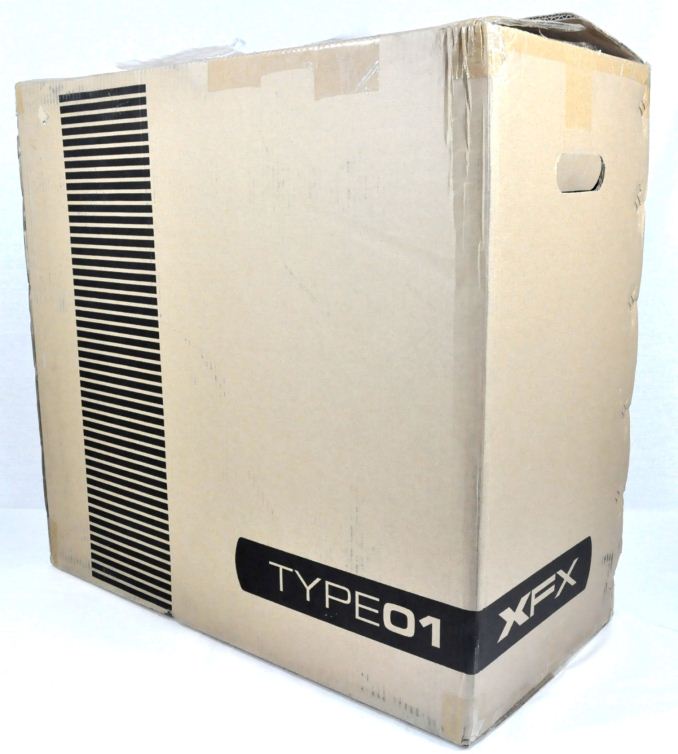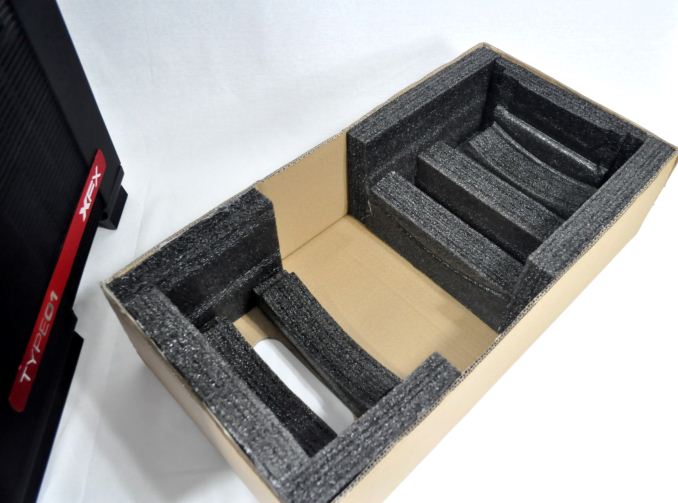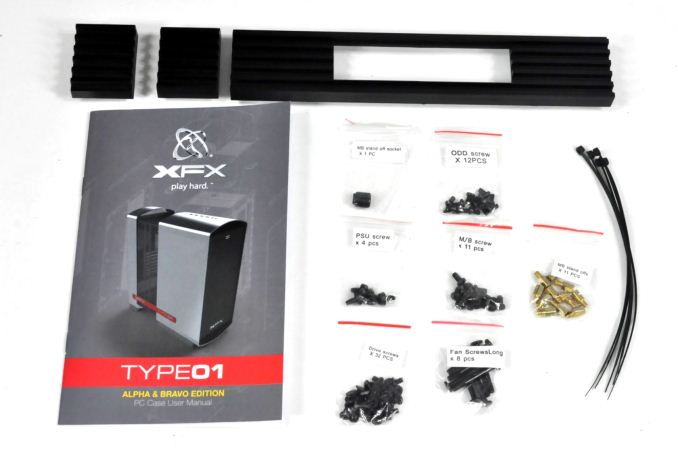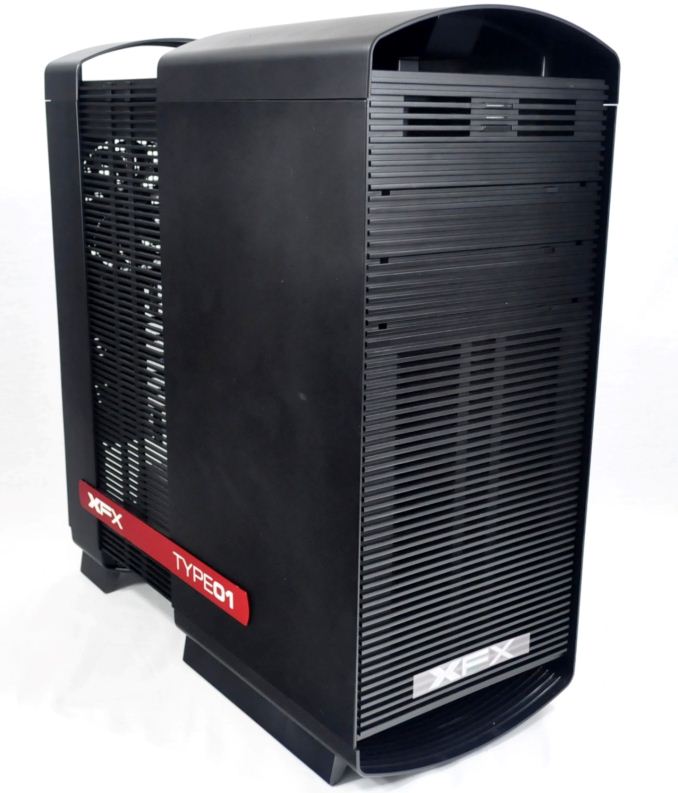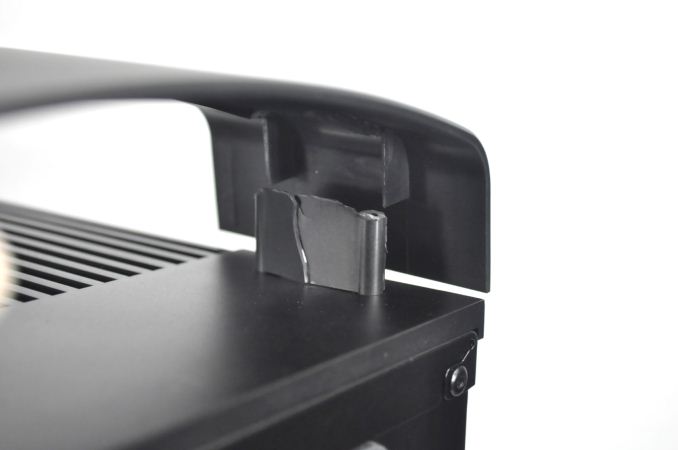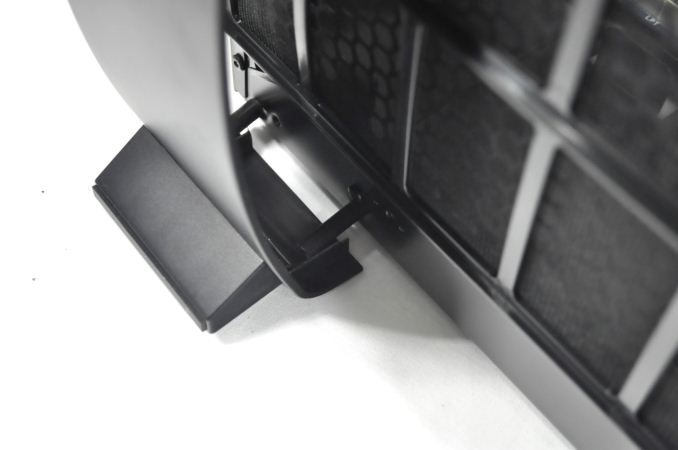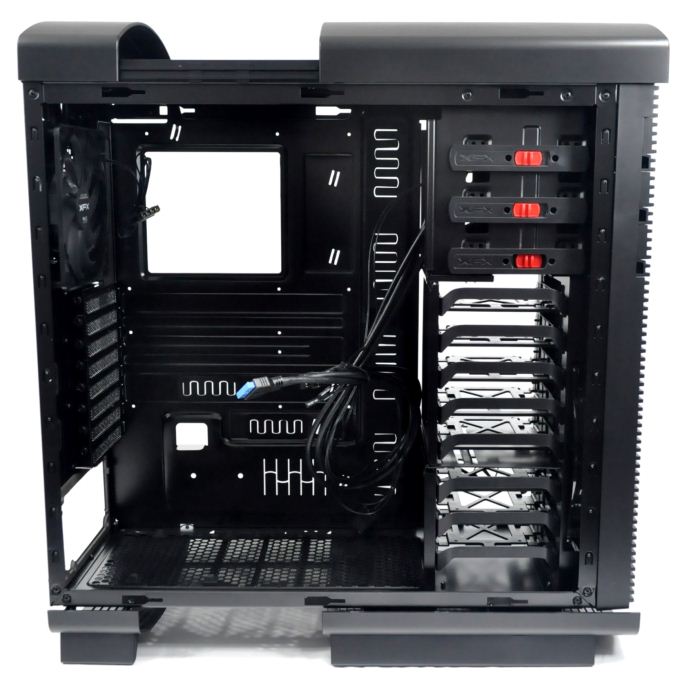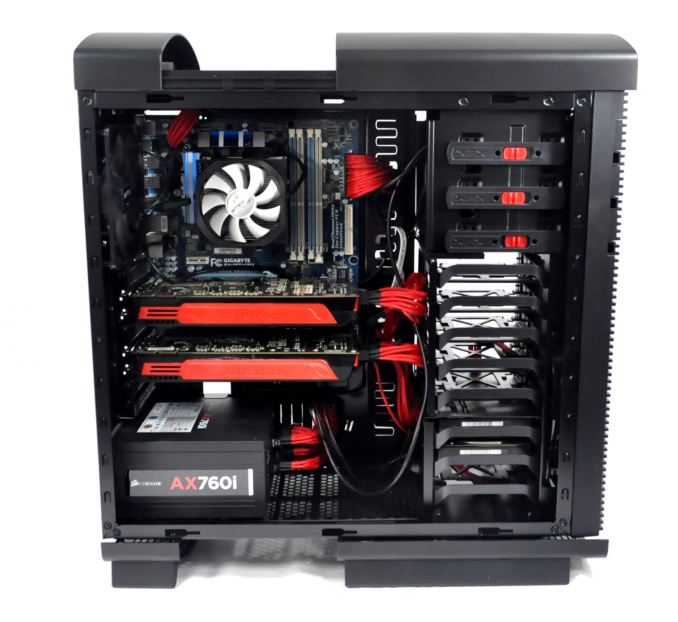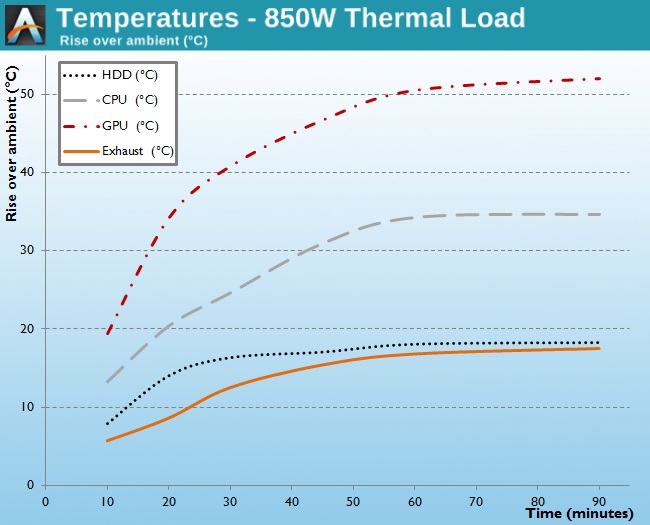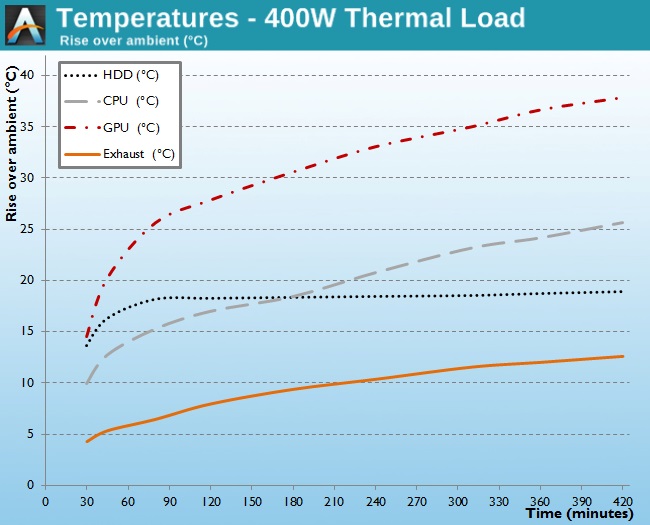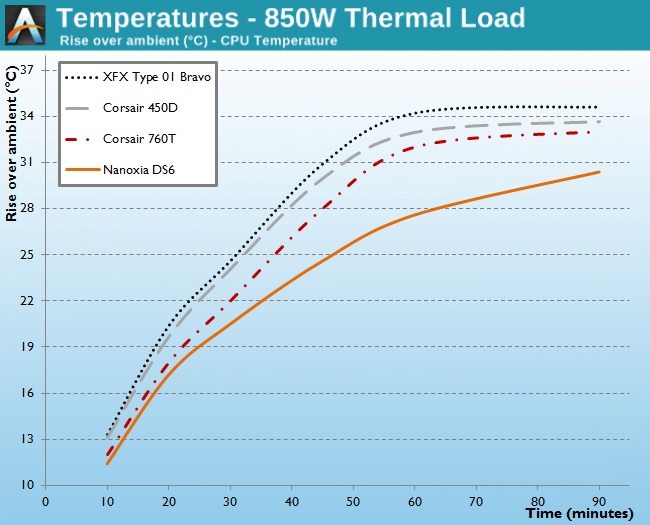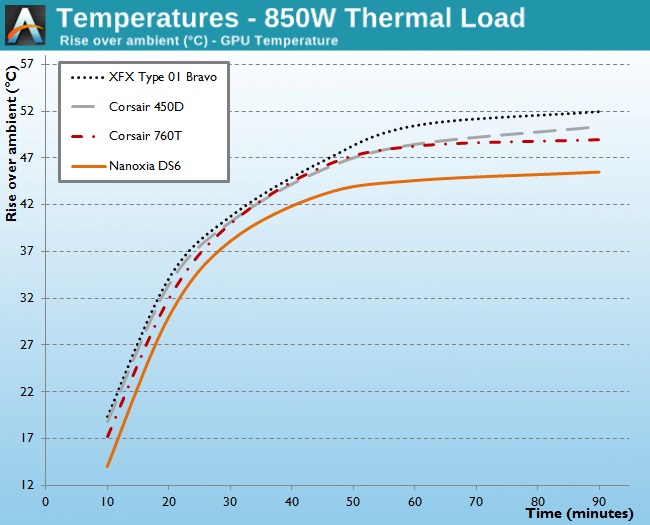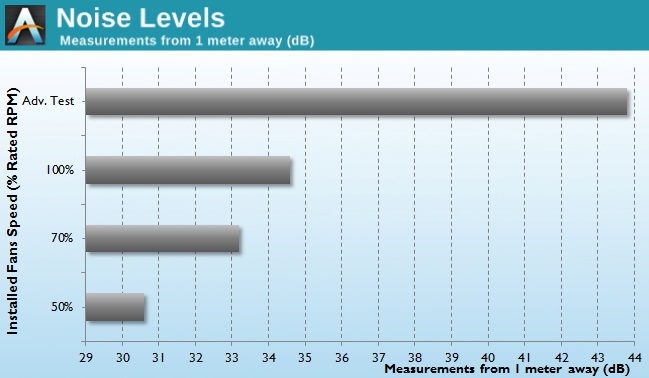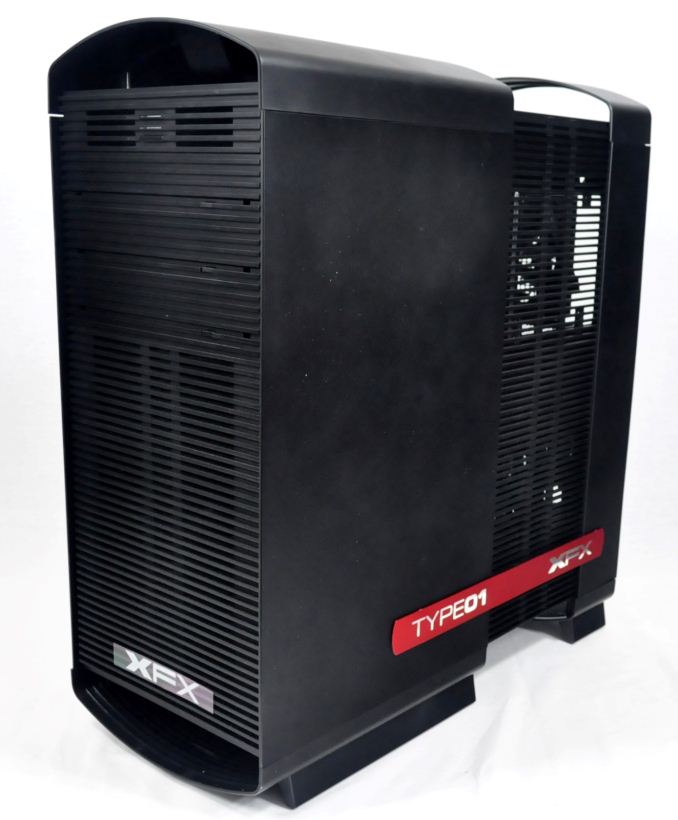
Original Link: https://www.anandtech.com/show/8009/xfx-type-01-bravo-case-review
XFX Type 01 Bravo Case Review
by E. Fylladitakis on May 16, 2014 6:00 AM EST- Posted in
- Cases/Cooling/PSUs
- XFX
- mid-tower
- Case
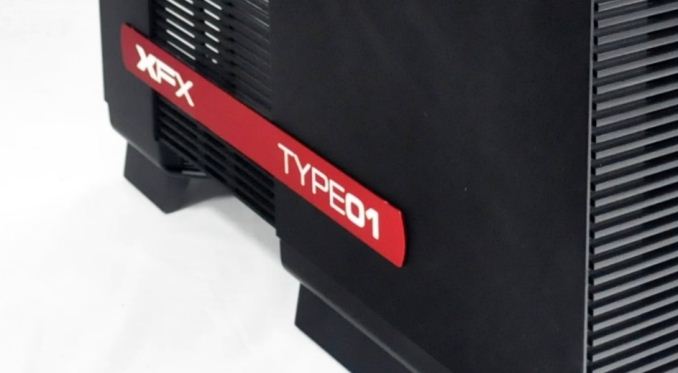
XFX Type 01 Bravo Case Review: Introduction
Companies often try to diversify their product lineup into other market segments, and today's review is such an attempt. XFX began as a graphics card manufacturer, later branching into motherboards, power supplies, and now cases. Today we're reviewing the Type 01 Bravo today, first ever PC case from XFX.
XFX is a company traditionally focused on gamers and their marketing has always been gaming-related -- they started by making graphics cards, after all. Thus, it is no surprise that their first case is being marketed as a "gaming case". On paper, the Type 01 Bravo is a feature-packed, roomy mid-tower PC case and, with a retail price of $129.99 plus shipping, it appears to be reasonably priced. But there's more to making a good case than paper specs, so let's find out if the Type 01 Bravo is is actually worth buying.
| XFX Type 01 Bravo Specifications | ||
| Motherboard Form Factor | Mini-ITX, Micro-ATX, ATX | |
| Drive Bays | External |
3 x 5.25" 1 x 3.5" (using a 5.25" to 3.5" adapter) |
| Internal |
5 x 2.5" or 3.5" (upper front drive cage) 3 x 3.5" (lower front drive cage) |
|
| Cooling | Front | 1 x 200 mm (included) |
| Rear | 1 x 120 mm / 140 mm (140 mm included) | |
| Top | 1 x 120 mm / 140 mm (optional) | |
| Left Side | 3 x 120 mm (optional) | |
| Bottom | 1 x 120 mm / 140 mm (optional) | |
| I/O Port |
2 × USB 3.0 2 × USB 3.0 1 × Headphone 1 × Mic |
|
| Power Supply Size | ATX | |
| Clearances | HSF | 175 mm |
| PSU | Any | |
| GPU |
340 mm (with 3.5" drive cage) 370 mm (with 2.5" drive cage) |
|
| Dimensions |
562 mm × 232 mm × 518 mm (H×W×D) 22.2 in × 9.2 in × 20.4 in (H×W×D) |
|
| Prominent Features |
Unique XFX floating case design Modern minimalist design style Seamless hidden disc drive bays with folding doors Open Mesh Bottom With Filter Water Cool Ready Isolated bottom mount PSU design Solid and light ABS plastic construction Standard Mid Size tower height Full ATX motherboard compatibility 5-year warranty (with registration) |
|
| Price |
$149.99 USD (MSRP) Online: $130 (plus shipping) |
|
Packaging & Bundle
We received the Type 01 Bravo in a very simple, brown cardboard box. There is virtually no artwork on the box at all, with the exception of horizontal stripes that resemble the corrugated theme of the case. Inside the box, the case is protected by thick, individualized expanded polyethylene foam slabs, enhanced with a cardboard shell. The box is understated but looks to provide a decent amount of padding and protection for the case.
XFX did a decent job with the bundle as well. Although nothing really special is supplied, the company packages everything into individual, labelled plastic bags. Aside from the screws and standoffs, XFX also provides a few cable ties, a 5.25" to 3.5" front panel adapter, and a basic manual.
XFX Type 01 Bravo Exterior
XFX obviously spent most of their energy on making the Type 01 Bravo visually unique. While the rough silhouette may resemble a few cases, there are plenty of other differentiating factors. The corrugated design of the faceplate is the main attraction of this case, which effectively hides the 5.25" bays and even the power on/reset buttons nearly perfectly. Similar corrugated vents can be seen on both side panels and the top of the case. A metallic red band is glued on the lower part of both side panels, with the company logo and case model in silver lettering.
The Type 01 Bravo tips our scale at 10.44 kg (23 lbs.) when empty, which is couple of kilograms heavier than a typical mid-tower case. Strangely, XFX advertises this as a case of "standard mid-size proportions"; however, this could not be further from the truth. Plastic frames form a rounded top and bottom, lifting the metallic chassis about 3.75 cm (1.47") above the surface. With a total height of over 56 cm (22.2") and a depth of 52 cm (20.4"), the Type 01 Bravo is much larger than a typical mid-tower case and is likely to outsize even a few full tower cases as well.
We should also note that although the plastic frames appear to form handles, it would be a terrible idea to use them as such, as they are not designed to hold the weight of the case even when empty, let alone with a system installed inside it. Trying to lift the case by its plastic frame will most likely cause the plastic to crack or snap.
The placement of the front I/O ports is a bit strange as well, as XFX locates them at the top of the case, along the center of the plastic frame. There are two USB 3.0 ports, two USB 2.0 ports, and the standard 3.5 mm headphone jacks. Placing the ports so far from the front of the case is at the very least peculiar, as they would be hard to reach even if the case is placed beneath a desk, let alone on top of one.
A large filter comes pre-installed at the bottom of the case, covering the PSU intake and the bottom intake vents. The filter is removable from the rear of the case and, due to its length, you would likely need to lift the case up in order to detach it.
The rear of the Type 01 Bravo is all black, and the entire metallic chassis has been sprayed with a matte black paint as well. With the exception of the rear exhaust fan opening, there are no other vents, but expansion covers are perforated for additional airflow. There are four holes for liquid coolers and cables, covered by unique rubber grommets that form "S" like shapes.
XFX Type 01 Bravo Interior
Like the exterior, the interior of the XFX Type 01 Bravo is all black, including the cooling fans and all of the plastic pieces. The red buttons on the 5.25" device locks (along with the red XFX logos on the sides) are the only exceptions. The body is composed of 0.7 mm SECC steel and it has very few supports, with the result being that the mechanical strength of the metallic chassis is below average. For rigidity, the Type 01 Bravo relies on the motherboard tray and the side panels. We wouldn't worry too much about the structural integrity of the metallic chassis though, because the brittle plastics are the real problem.
On the previous page, we mentioned that the plastic top and bottom frames are just for decoration and mishandling them will almost certainly cause permanent damage. We tested that theory by trying to lift the empty case by its rear top plastic frame, which looks like a handle. The result of that test was the snapping of the frame even before the whole case was off the ground. The bottom rear frame shattered when the case landed back on the floor as well. It goes without saying that users need to handle the Type 01 Bravo with extra care.
The motherboard tray of the XFX Type 01 Bravo is designed to hold motherboards up to full ATX size. Strangely, the area of the motherboard is slightly recessed, bringing the motherboard a little lower. There are many openings for routing cables, with almost all of them covered by the unusual "snake opening" rubber grommets. The sole exception is the opening at the top right side of the motherboard tray, which is for the CPU power cable.
We should add that there is an opening a little higher than the bottom of the tray for Micro-ATX motherboards, which is a nice touch. The opening for the installation of coolers is not very large but it ought to be adequate, unless the motherboard has the CPU slot placed in a strange location. The clearance between the motherboard and the top panel is good but only a single fan can be installed there, therefore only liquid coolers with radiators up to 140 mm long are usable.
It is possible to install a PSU of virtually any length in the Type 01 Bravo. A unit with a chassis longer than 180 mm however is likely to block the optional bottom fan slot. The PSU sits on rubber supports and there is a cushion between it and the chassis of the case, isolating any vibrations between the case and the PSU.
There are two HDD drive cages inside the Type 01 Bravo. The bottom cage can hold up to three 3.5" or 2.5" drives. Things are a bit more complicated with the top cage, which can hold up to five trays. The standard trays can hold either 2.5" or 3.5" drives but it is possible to move the metallic side of the cage an inch inwards, allowing the use of five narrow trays that can only hold 2.5" drives. The narrow trays are provided with the case by XFX, and by reducing the width of the cage the user gains about 30 mm extra space for overly long graphics cards. Of course, it is also possible to remove the cage completely should you choose.
A massive 200 mm fan is installed at the front of the case, behind a nylon dust filter. To clean the filter, the user has to pull the entire faceplate off. This has to be done cautiously, as there is a cable connected to the faceplate for the buttons and LED lights that needs to be unplugged. You'll also want to make sure you don't tie that cable down anywhere while managing the cables of the case, as doing so will make it difficult or impossible to move the faceplate out of the way.
The rear of the motherboard tray is spacious and clean, with a few cable tie mounts available to the user, allowing for effective cable management. However, the clearance between the tray and the side panel is just 18 mm, which is mediocre at best and can be a little bit of a headache if there are many cables overlapping each other.
Black cables and parts are easily hidden inside an all-black chassis so for visual clarity we are using a Corsair AX760i PSU with a red cable pack and white SATA cables for our pictures. Building a system inside the Type 01 Bravo is a simple procedure, much like with any typical mid-size tower case. We spent most of our time routing the cables, which is what we suspect that will be true for end users as well.
As you can see from the pictures of our test build, the ATX system fits inside the XFX Type 01 Bravo like a glove. The many openings make the routing of cables a seamless procedure, and the EPS connector can be routed from the opening at the top right side of the motherboard tray. Typical graphics cards can easily fit inside the Type 01 Bravo, without having to reduce the width of the drive's cage. Cards longer than 340 mm are likely to be a problem with the 3.5" drive cage installed, but such cards are uncommon. Should you have need for more space, however, the width of the drive cage can be reduced or it can be removed completely. This will benefit all of the motherboard's expansion slots, allowing the installation of more than one extra-long card if the user is planning to build a very powerful SLI/Crossfire gaming system.
Test Setup
Professional testing requires the emulation of real-world situations but with repeatable results; thus, a perfectly controllable test setup and environment are required, especially for comparable results. Testing the thermal performance of any case with a typical real-world setup technically limits the comparability of the results to this setup alone, as an active system interacts with its environment and the change of a single component alters (albeit in small ways) myriads of variables. In order to eliminate such factors, we developed synthetic loads that emulate the thermal output of real systems that are passive, steady and quantifiable.
Our thermal testing now displays the thermal capabilities of the case alone, as if it must deal with the entire thermal load by itself, regardless of the system that might be installed inside it. Laboratory data loggers are used to monitor the PT100 sensors and control the safety relays, which are fully accessible via our custom software. Three such loads have been developed, and today we'll be using the ATX load.
The ATX version simulates a 200W CPU, 50W VRM, 30W RAM and 4 × 120W GFX card thermal load; additionally, three 3.5" HDD dummy loads are also present that each convert 30W of electrical power to thermal, bringing the total thermal load of the ATX test setup up to 850W. As such, the thermal load is immense and only the best of cases will be able to handle it for more than a few minutes. We also test with a thermal load of 400W, with all of the aforementioned components except the HDD drives at about 42% power, which is more suitable for the majority of cases.
Thermal testing is performed with all of the case's stock fans operating at maximum speed. Standard noise testing is performed with a background noise level of 30.4dB(A). Advanced noise testing is also being performed, in order to assess the ability of the case to dampen the noise of the components installed inside. This includes the installation of two noise-generating sources (strong fans) inside the case, one positioned approximately over the first expansion slot and one over the CPU area, which generate ≈ 44.2 dB(A) when unobstructed. During the advanced noise test, all stock cooling options of the case are entirely disabled.
Results and discussion
Unfortuantely, the thermal performance of the XFX Type 01 is rather mediocre. We cannot deny the fact that we expected more from a case with lots of ventilation and a 200 mm fan installed, yet the Type 01 Bravo can hardly compete with mid-tower cases of similar internal proportions. After all, the Type 01 Bravo is, as far as dimensions are concerned, a typical mid-tower case with plastics that add a lot of bulk. When compared to a high performance (and significantly more expensive) gaming case, the XFX Type 01 Bravo falls behind in terms of thermal performance. To illustrate this, we have created additional graphs showing other cases that we have tested using our new procedures. We are focusing on the two hottest components for these charts, the CPU and GPU loads.
The other side of the story is that the stock cooling fans of the XFX Type 01 Bravo are very weak. Although this obviously has a great effect on thermal performance, it also means that the XFX Type 01 Bravo generates very little noise. Even with its fans running at maximum speed, the XFX Type 01 Bravo generated levels of noise barely perceptible from one meter away.
Considering the fact that the design of this case is not really meant to dampen the noise of the system, the stock cooling system of the XFX Type 01 Bravo may not be powerful but it certainly is efficient considering the small amount of noise it generates. When additional noise sources are present, the acoustic performance of the XFX Type 01 Bravo is mediocre, as the design of this case (and most cases optimized for airflow) has virtually zero noise-dampening capabilities.
Final Words
XFX put a lot of effort into the aesthetic appeal, with their marketing claiming that a case "represents who you really are". Aesthetics are a strictly subjective matter and the design of the Type 01 Bravo is undoubtedly unique. On the other hand, although it is not an aggressive design, we cannot really consider it to be "minimalistic" as XFX claims. The definition of minimalism is to design something with the least amount of elements possible, achieving simplicity. Though the design of the Type 01 Bravo is based on basic geometric shapes, they have been used excessively and in order to achieve a design that stands out a lot, not to form a simple and understated product.
In terms of performance, the XFX Type 01 Bravo is no better than most typical mid-tower cases. Although this isn't bad considering the size and design of the case, it becomes a problem once the price of the case is included in the evaluation. If it could close the performance gap between a mid-sized tower case and an advanced gaming case, the XFX Type 01 Bravo would have been serious competition; however, the XFX Type 01 Bravo is all but hopeless when compared with larger, more advanced designs.
Despite that, aesthetics are a subjective matter (some users might hate this design, others may love it) and the average performance is not really a major issue for a new case. The real problem of the Type 01 Bravo is the quality issues and the excessive use of plastic. We should clarify that there is nothing inherently wrong with plastic, the properties of which depend on its quality and density - there are plastics that greatly surpass the properties of the best metals. However, the plastics used in the Type 01 Bravo are badly designed and very brittle, requiring very careful handling by the user or serious damage is bound to happen. This also makes the Type 01 Bravo entirely unsuitable for frequent transportation and we would not recommend it to people who upgrade often either.
As the Type 01 Bravo is the very first attempt from XFX to design a case, we consider it to be a fair attempt, but with plenty of room for improvements. We cannot deny that the Type 01 Bravo has several useful and interesting features, nor that it is versatile and easy to work with. It is however plagued by quality issues and the price tag is hard to justify for what really is a typical mid-sized tower case with an unusual aesthetic. XFX is currently working on other case designs, with a rumored aluminum-based "Type 01 Alpha" coming up, which sounds far more interesting for advanced users, gamers, and enthusiasts.

